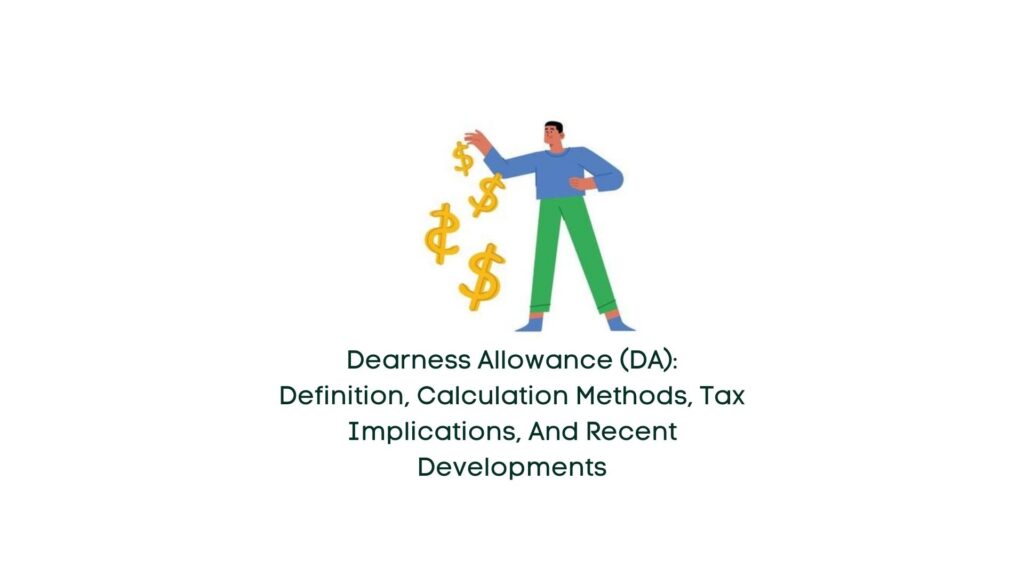
02 Mar Dearness Allowance (DA): Definition, Calculation Methods, Tax Implications, and Recent Developments

In the realm of employment, various components beyond basic salaries contribute to an employee’s take-home pay. One such critical component is Dearness Allowance (DA), particularly prevalent in the public sector.
Definition and Purpose:
DA is an allowance disbursed by governments to employees and pensioners to counteract the effects of inflation. As prices fluctuate due to market forces, the government aims to ensure the real wages of its employees remain relatively stable.
Calculation Method:
The calculation of DA occurs biannually, typically in January and July. For Central Government employees, it follows a formula based on the All-India Consumer Price Index (AICPI), while public sector employees adhere to a similar formula with slight modifications.
Tax Treatment:
Recent updates dictate that DA is fully taxable for salaried individuals. Additionally, if an employee receives unfurnished rent-free accommodation, a portion of it may be considered as part of the retirement benefit salary, subject to specific conditions outlined in the Income Tax regulations.
Types of DA:
Two primary types exist: Industrial Dearness Allowance (IDA) and Variable Dearness Allowance (VDA). IDA applies to public sector employees, undergoing quarterly revisions based on the Consumer Price Index. VDA, on the other hand, is specific to Central Government employees and is revised semi-annually.
Role of Pay Commissions:
Pay Commissions play a pivotal role in assessing and adjusting salaries, considering components like DA. Their responsibility extends to periodic reviews and updates to ensure fair compensation for employees.
DA for Pensioners:
Pensioners, retired government employees, also benefit from changes in DA. Any alterations in DA percentages reflect directly on their pension, aligned with adjustments made in subsequent salary structures.
Recent Developments:
The Budget 2018 saw a 2% increase in DA, a welcomed relief for over 50 lakh central government employees and 55 lakh retirees eligible for pensions. Such adjustments alleviate the financial burden caused by inflation.
Distinguishing DA from HRA:
It’s essential not to conflate DA with House Rent Allowance (HRA). While both contribute to an employee’s compensation, they operate differently, especially concerning tax implications and eligibility criteria.
Potential Merger and Impact:
With DA consistently increasing, discussions of merging it with basic salaries have emerged. Such a merger, especially if implemented when DA surpasses 50%, could significantly augment employee salaries, potentially awaiting a government decision.


No Comments